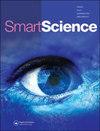基于多目标教学的结构优化
IF 1.4
Q2 MULTIDISCIPLINARY SCIENCES
引用次数: 18
摘要
基于教与学的优化是一种特殊的、无参数的、功能强大的算法。然而,在大而多样的空间中,特别是在求解多目标问题时,它往往陷入局部最优,面临过早收敛的批评。本文提出了一种基于非支配排序和外部档案解存储框架的基于教学的多目标优化方法。这些技术提高了算法的搜索速度和收敛速度。此外,该机制还有助于获得接近真实Pareto解的Pareto最优集,同时保持一次运行中非支配解的多样性。本文提出了一种新型的MOTLBO。为了确定实际应用的可行性,感知结构设计问题暴露于多个和不同的节点变形目标的重量最小化和最大化。将该算法应用于五个具有离散设计变量和多约束条件的结构优化问题。为了进行性能检查,将该算法与两种著名的多目标算法进行了对比。所有考虑的测试示例的性能指标是Pareto前超大容量和前间距到范围测试。MOTLBO展示了其一致性和多样化的解决方案,以生产所需的帕累托前线。图形抽象本文章由计算机程序翻译,如有差异,请以英文原文为准。
Multi-Objective Teaching-Learning-Based Optimization for Structure Optimization
ABSTRACT Teaching–learning-based optimization is a specific parameter-free and powerful algorithm. However, in large and diverse spaces it often gets trapped in local optima and faces criticism of premature convergence particularly while solving multi-objective problems. The present work proposed a novel multi-objective teaching–learning-based optimization (MOTLBO) based on the framework of non-dominated sorting and solution storage in an external archive. These techniques improve the algorithm’s speed of search and convergence rate. Moreover, this mechanism also assists in obtaining a Pareto optimal set near to the true Pareto solutions while simultaneously maintaining the diversity among non-dominated solutions within one run. The present work proposed a novel MOTLBO. To determine feasibility for practical applications, perceived structure design problems are exposed to multiple and diverse weight minimization and maximization of nodal deformation objectives. The suggested algorithm is employed to five challenging optimization issues of the structure having discrete design variables and subject to multiple constraints. For a performance check, the suggested algorithm is contrasted with two prominent multi-objective algorithms. The performance gauge for all considered test examples is the Pareto front hypervolume and front spacing-to-extent test. MOTLBO shows its promise with coherence and diversification of solutions for producing the desired Pareto fronts. Graphical Abstract
求助全文
通过发布文献求助,成功后即可免费获取论文全文。
去求助
来源期刊

Smart Science
Engineering-Engineering (all)
CiteScore
4.70
自引率
4.30%
发文量
21
期刊介绍:
Smart Science (ISSN 2308-0477) is an international, peer-reviewed journal that publishes significant original scientific researches, and reviews and analyses of current research and science policy. We welcome submissions of high quality papers from all fields of science and from any source. Articles of an interdisciplinary nature are particularly welcomed. Smart Science aims to be among the top multidisciplinary journals covering a broad spectrum of smart topics in the fields of materials science, chemistry, physics, engineering, medicine, and biology. Smart Science is currently focusing on the topics of Smart Manufacturing (CPS, IoT and AI) for Industry 4.0, Smart Energy and Smart Chemistry and Materials. Other specific research areas covered by the journal include, but are not limited to: 1. Smart Science in the Future 2. Smart Manufacturing: -Cyber-Physical System (CPS) -Internet of Things (IoT) and Internet of Brain (IoB) -Artificial Intelligence -Smart Computing -Smart Design/Machine -Smart Sensing -Smart Information and Networks 3. Smart Energy and Thermal/Fluidic Science 4. Smart Chemistry and Materials
 求助内容:
求助内容: 应助结果提醒方式:
应助结果提醒方式:


